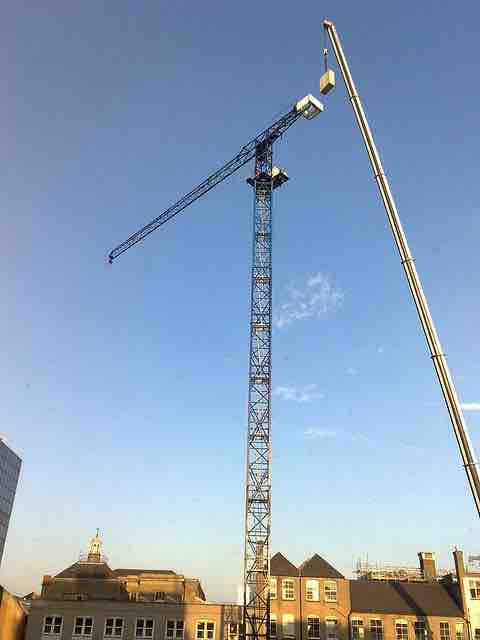What is a Lease
A lease is a contract calling for the lessee (user) to pay the lessor (owner) for use of an asset for a specified period.
Why Do Some Companies Lease
For many companies the decision is monetary. A lease allows a company to get a major piece of equipment with no large expenditure of cash. In addition, some companies who are in the financial position to buy equipment still prefer to lease because they would not benefit from the depreciation on the equipment.

Equipment Lease
An equipment lease allows a company to get a piece of equipment without a large expenditure.
Types of Leases
There are two types of leases capital leases and operating leases.
Capital equipment is financed either with debt or equity. A capital lease is a form of debt-equity financing in which the lease acts like loan. To that end, a capital lease must be recorded as liability on the company's balance sheet, it is important to note that the IRS treats capital leases as a liability.
On the other hand, an operating lease lets a company obtain equipment with virtually no upfront capital outlay and with the lease payments treated as a deductible cost of business.
Accounting for the Lease-Leasee
Under an operating lease, the lessee records rent expense (debit) over the lease term, and a credit to either cash or rent payable. If an operating lease has scheduled changes in rent, normally the rent must be registered as an expense on a straight-line basis over its life, with a deferred liability or asset reported on the balance sheet for the difference between expense and cash outlay.
Under a capital lease, the lessee does not record rent as an expense. Instead, the rent is reclassified as interest and obligation payments, similarly to a mortgage (with the interest calculated each rental period on the outstanding obligation balance). At the same time, the asset is depreciated. If the lease has an ownership transfer or bargain purchase option, the depreciable life is the asset's economic life; otherwise, the depreciable life is the lease term. Over the life of the lease, the interest and depreciation combined will be equal to the rent payments.
Note: For both capital and operating leases, a separate footnote to the financial statements discloses the future minimum rental commitments, by year for the next five years, then all remaining years as a group.
Accounting for the Lease-Lessor
Under an operating lease, the lessor records rent revenue (credit) and a corresponding debit to either cash/rent receivable. The asset remains on the lessor's books as an owned asset. The lessor records depreciation expense over the life of the asset. Under a capital lease, the lessor credits owned assets and debits a lease-receivable account for the present value of the rents. The rents are an asset, which is broken out between current and long-term, the latter being the present value of rents due more than 12 months in the future. With each payment, cash is debited, the receivable is credited, and unearned (interest) income is credited.
Other Lease Items
- Leasehold Improvements: Improvements made by the lessee. These are permanently affixed to the property and revert to the lessor at the termination of the lease. The value of the leasehold improvements should be capitalized and depreciated over the lesser of the lease life or the leasehold improvements life. If the life of the leasehold improvement extends past the life of the initial term of the lease and into an option period, normally that option period must be considered part of the life of the lease.
- Lease Bonus: Prepayment for future expenses. Classified as an asset; amortized using the straight-line method over the life of the lease.
- Security Deposits: Nonrefundable security deposits:deferred by the lessor as unearned revenue; capitalized by the lessee as a prepaid rent expense until the lessor considers the deposit earned. Refundable security deposits: treated as a receivable by the lessee; treated as a liability by the lessor until the deposit is refunded to the lessee.